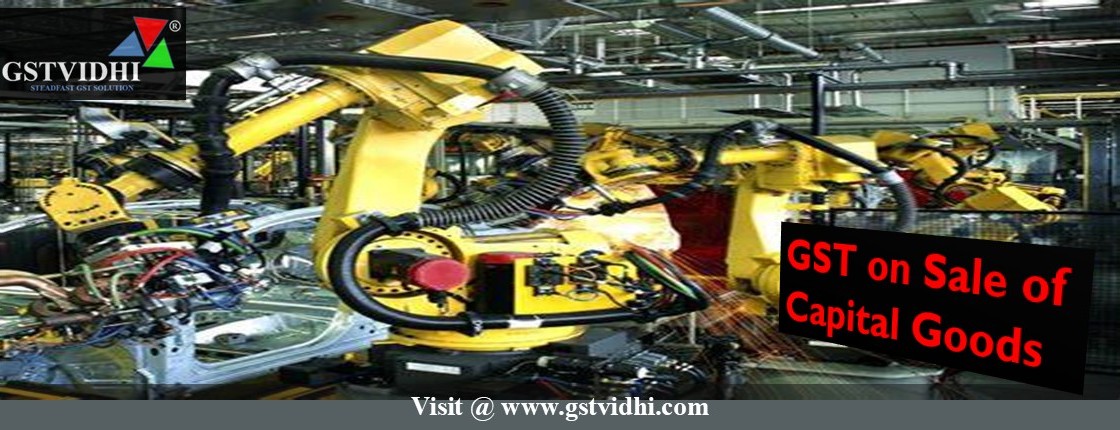
GST on Sale of Capital Goods on Which ITC Claimed ( Understanding
Tax Implications, Reversal Rules, and Examples)
Introduction
Under GST, businesses are allowed to claim Input
Tax Credit (ITC) on capital goods used for business purposes. But what
happens when these capital goods are sold, scrapped, or disposed of? Are you
required to pay GST? Do you need to reverse any ITC?
This article explains the tax implications under Section
18(6) of the CGST Act, along with Rule 44(6) of the CGST Rules, in
simple terms with practical examples.
What Are Capital Goods?
Capital goods are assets such as machinery, equipment,
computers, vehicles (used for business), etc., which are used in the production
or supply of goods or services and have a useful life over a long period.
If ITC is claimed on such goods at the time of
purchase, then special rules apply when these goods are sold or
disposed of.
Relevant Legal Provisions
Section 18(6) of the CGST
Act:
If a registered person sells or disposes of capital
goods or plant and machinery on which ITC has been availed, they
must pay back the higher of the following:
1.
ITC taken,
reduced by the prescribed percentage for the period of use, or
2.
GST on the transaction value (sale
price) of the capital goods.
Rule 44(6) of CGST Rules:
Provides the method to calculate ITC to be reversed
based on the remaining useful life of the capital goods.
- Useful
life is considered as 5 years (60 months).
- ITC
to be reversed =
ITC claimed × Remaining useful life (in months) ÷ 60
If the GST on the sale price is higher than
the ITC reversal, then tax on the sale price is payable.
Example 1: Sale of Capital
Goods After Use
Facts:
- Purchase
date of machinery: 01-April-2020
- ITC
claimed at the time of purchase: ₹60,000
- Date
of sale: 15-October-2024
- GST
rate on sale: 18%
- Sale
price: ₹80,000
Step-by-Step Calculation:
1.
Period used
= 4 years 6 months 15 days
→ Remaining useful life = 5 months (ignore part of month)
2.
ITC to be reversed
= ₹60,000 × 5/60 = ₹5,000
3.
GST on sale price
= ₹80,000 × 18% = ₹14,400
4.
Since ₹14,400 (tax on transaction value)
is greater than ₹5,000 (ITC reversal), the dealer must pay ₹14,400
as GST.
Conclusion:
Pay GST on sale price (₹14,400) and show it in GSTR-1
as part of output tax liability.
Example 2: Capital Goods Sold as Scrap
- Original
ITC claimed: ₹36,000
- Used
for: 4 years
- Remaining
life = 12 months
- Sold
as scrap: ₹10,000
- GST
rate = 18%
- GST
on scrap = ₹1,800
ITC Reversal = ₹36,000 × 12/60 = ₹7,200
But GST on transaction = ₹1,800
Conclusion:
Since ₹7,200 > ₹1,800, pay ₹7,200 as GST and
show as output tax liability.
Frequently Asked Questions
(FAQs)
Is ITC reversal required for capital goods
if sold after 5 years?
No. If the capital goods are
used for more than 5 years, no reversal is required. Only GST on the
sale value is payable.
Can I avoid reversal if I didn’t claim ITC
on capital goods?
Yes. If ITC was not
claimed, Section 18(6) and Rule 44 do not apply.
What happens if capital goods are lost,
stolen, or destroyed?
In such cases, ITC needs to be reversed under
Section 17(5), as it becomes blocked credit.
Conclusion
The sale of capital goods under GST requires careful
tax treatment if ITC has been availed. The law ensures that if you
benefited from ITC earlier, and then dispose of the asset, you must either
reverse part of the credit or pay tax on the sale value—whichever is higher.
Proper accounting, documentation, and compliance
with Section 18(6) and Rule 44(6) will help you avoid penalties
and maintain tax accuracy.
Disclaimer: All the Information is based on the notification, circular and order issued by the Govt. authority and judgement delivered by the court or the authority information is strictly for educational purposes and on the basis of our best understanding of laws & not binding on anyone.
Click here